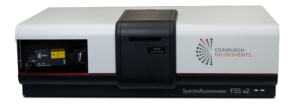Current cancer treatments often have serious side effects and involve surgery, radiotherapy or chemotherapy. Photodynamic therapy (PDT) is a promising alternative cancer treatment with the potential to reduce side effects. PDT requires a photosensitiser that is embedded in a tumour. The photosensitiser can then be excited by light of a specific wavelength and convert the tumour’s oxygen into biotoxic reactive oxygen species, which kills the tumour cells. However, PDT efficiency faces challenges as the current clinical trials use short-time high-intensity light sources that cause necrosis of the tumour rather than apoptosis. Metronomic photodynamic therapy (mPDT) has recently emerged as a promising solution. It requires prolonged, low-intensity light exposure, which results in the tumour’s apoptosis. The challenges in translating mPDT into a clinical setting include the rapid photobleaching of the photosensitisers and the amount of reactive oxygen species that decreases after prolonged light exposure.
A study from Huazhong University of Science and Technology and China University of Geosciences demonstrated that aggregation-induced emission (AIE) photosensitisers (PytPA) in mPDT are photobleaching resistant. Then, they loaded PyTPA into a microneedle-based device to achieve a novel mPDT system that provides a deep and uniform delivery of the photosensitisers into the tumour. The fluorescence properties of the photosensitisers were analysed using an Edinburgh Instruments FS5 Spectrofluorometer.
Figure 1, Conceptual illustration of the microneedle-based system that a) inhibits the tumour growth and b) eliminates it in a postoperative occurrence. Adapted with permission from “Microneedle Device Delivering Aggregation-Induced Emission Photosensitizers for Enhanced Metronomic Photodynamic Therapy of Cancer”, Jun Dai, S. Wei, J. Xu, H. Xue, Ζ. Chen, M. Wu, W. Chen, X. Lou, F. Xia, S. Wang, ACS Appl. Mater. Interfaces 2023, 15, 13, 16526–16538. Copyright 2023 American Chemical Society.
The fluorescence properties of the AIE photosensitiser were studied using an FS5 Spectrofluorometer (Figure 2). The FS5 was equipped with a 150 W Xenon lamp and a PMT-900 photodetector with a 200-890 nm spectral range. The sample was held using the SC-05 Standard Cuvette Module.
Figure 2, Edinburgh Instruments FS5 Spectrofluorometer.
The PyTPA fluorescence emission spectra were acquired with an FS5 in various tetrahydrofuran (THF) and DMSO solutions. Figure 3a shows the sample’s fluorescence intensity variation at different THF and DMSO ratios. The PyTPA intensity was enhanced as the concentration of THF was increased, as the molecules were more aggregated, reaching the maximum intensity at 99% THF and 1% DMSO.
The next step involved encapsulating PyTPA with 1% DMSO in the microneedles, forming a microneedle-based photosensitisers delivery system (Microneedles@AIE PSs). The release kinetics of the delivery system was tested using the FS5 (Figure 3b). Using Fluoracle’s Batch Mode feature, a custom sequence of scans and delays can be created and measured automatically without the user’s input. Figure 3b shows that the fluorescence of the PBS solution gradually increased with time, reaching a maximum signal after around one hour, revealing that one hour is the time it takes for the PyTPA to be completely released from Microneedles@AIE PSs. Further testing using the FS5 showed that after prolonged irradiation, the solution exhibited remarkable anti-photobleaching properties, rendering them suitable for mPDT.
Figure 3 a, Variation in the fluorescence intensities of PyTPA at different THF and DMSO ratios. b) Variation of the fluorescence intensity of PyTPA released by Microneedles@AIE PSs as a function of time. Adapted with permission from “Microneedle Device Delivering Aggregation-Induced Emission Photosensitizers for Enhanced Metronomic Photodynamic Therapy of Cancer”, Jun Dai, S. Wei, J. Xu, H. Xue, Ζ. Chen, M. Wu, W. Chen, X. Lou, F. Xia, S. Wang, ACS Appl. Mater. Interfaces 2023, 15, 13, 16526–16538. Copyright 2023 American Chemical Society.
The release kinetics and photostability of a novel AIE photosensitiser and microneedle delivery system developed by Huazhong University of Science and Technology and China University of Geosciences were studied using an FS5 Spectrofluorometer.
The results shown in this Research Highlight were published in ACS Applied Materials & Interfaces and are available at https://doi.org/10.1021/acsami.3c01682.

